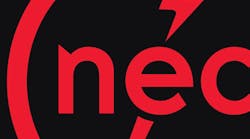What can you learn from the NEC’s Annex D examples D2(a), D2(b), and D2(c)? These are variations of the same application using the optional calculation method. The variations:
• D2(a): Dwelling unit with heating larger than air conditioning.
• D2(b): Dwelling unit with air conditioning larger than heating.
• D2(c): Dwelling unit with heat pump.
Unfortunately, the first one is printed on the opposite side of the same page as the second two. So you can’t do a side by side comparison with just your Code book.
This problem is easily solved by any of the following:
• With a photocopier, provided you don’t distribute the photocopy (the NEC is copyrighted material).
• Use the electronic version and the paper version at the same time.
• Use two paper copies at the same time. For example, you have a copy of the NEC in your service van and one in your office.
One thing to notice is that, beyond what’s stated in their respective titles, the scenarios are not identical. Read the problem as stated in the opening paragraph of each, then look at what’s listed under General Load. Each example gives you a slightly different twist on the same basic application. If you work through all three examples, you will have a good feel for how to correctly perform feeder and load calculations using the optional method.
There’s a “hidden” lesson in these examples. It’s worth pointing out because it can help you work more effectively and accurately. It’s not a technical lesson, but it is one that can make your days less stressful and more productive.
After the General Load heading in D2(a), the next heading is Application of Demand Factor. This heading is absent from D2(b) and D2(c). What’s going on?
As noted, these problems illustrate the optional calculation method. That’s covered in Art. 220, Part IV. Looking there, we see that for general loads, the demand factors are 100% for the first 10kVA plus 40% of the remainder for certain loads [220.82(B)]. This same demand factor calculation is performed in the same location in the workflow in all three examples. It’s just that the heading (and the accompanying NEC reference) is missing in the other two.
If you were starting with either D2(b) or D2(c), you might not recognize that you’re doing demand factor calculations per Sec. 220.82(B) unless you knew to turn to Art. 220 Part IV and were reading that along with the examples.
But if you start with D2(a) you see it right away because of the heading and the NEC reference that are inserted above these steps. These kinds of annotations help you when doing your work and help you and probably others when reviewing your work. Do you annotate?
You can also see a need to compartmentalize or modulize your calculations. When you can look at the layout of the calculations and see discrete steps (all labeled/annotated), isn't that better than just a jumble of calculations written out? Think of it as applying the good workmanship requirement [110.12] not just to electrical equipment, but also to the calculations for the circuits supplying that equipment.




